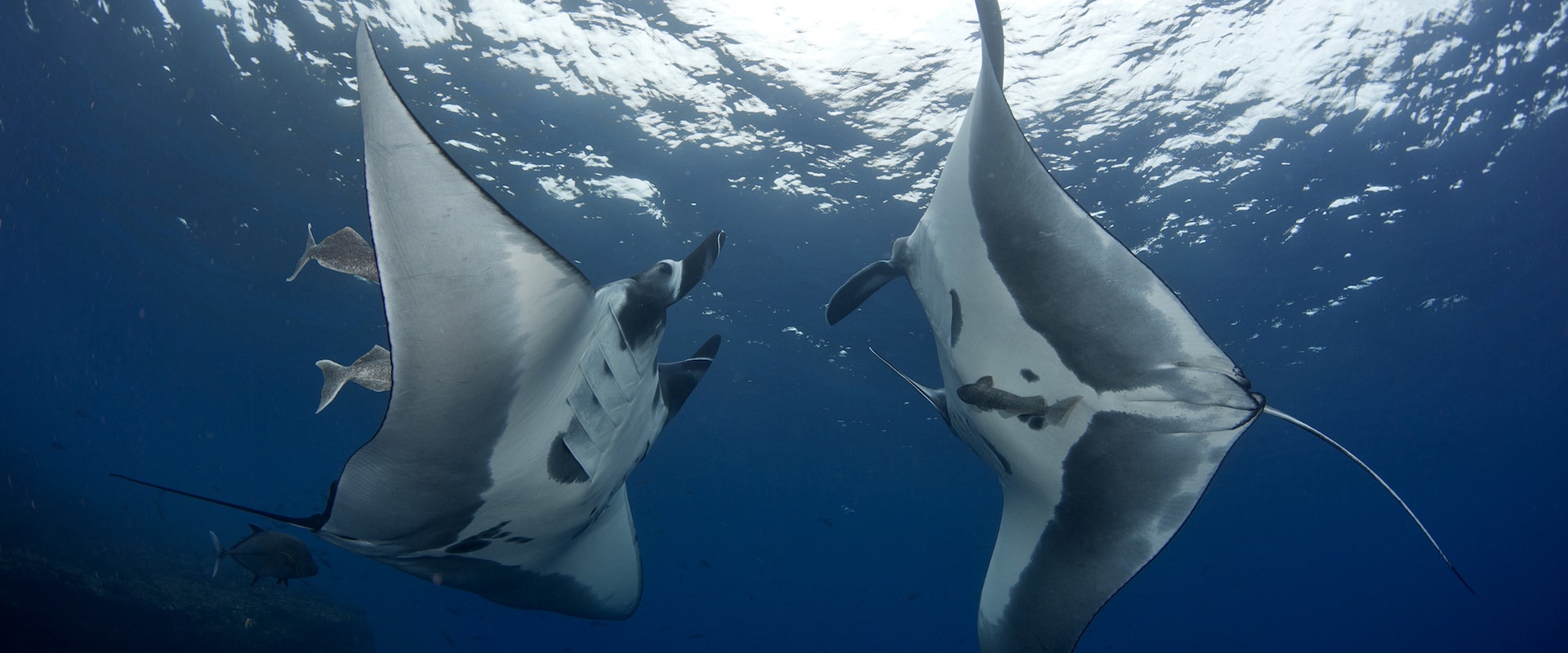Snorkeling Mexico
Snorkeling in Mexico
The waters off the Pacific coast make for some unparalleled snorkeling in Mexico, filled with coral reefs, a wide array of tropical fish and chance encounters with some of the largest creatures in the ocean.
Set among stunning scenery of mountains and cacti-spotted desert, the Baja California peninsular in northwestern Mexico protects the Gulf of California, more commonly known as the Sea of Cortez from tides, current and swells of the Pacific Ocean, leaving generally calm seas that are the perfect environment whether are you are a seasoned pro or new to Mexico snorkeling. But whether you stay close to the peninsula or use it as a jumping-off point for a snorkel trip to the remote Socorro Islands, you'll be in store for some serious big fish adventures.
10 Snorkeling Cruises in Mexico
Explore all liveaboards
Quino el Guardian
Mexico-
- from $ 360 / day
- 8.9 Fabulous
- 51reviews

Valentina
Mexico-
- from $ 398 / day
- 9.2 Superb
- 101reviews

Solmar V
Mexico-
- from $ 273 / day
- 8.6 Fabulous
- 60reviews

Southern Sport
Mexico-
- from $ 285 / day
- 8.8 Fabulous
- 2reviews

Adventure
Mexico-
- from $ 342 / day
- 9.4 Superb
- 17reviews

Nautilus Belle Amie
Mexico-
- from $ 314 / day
- 9.4 Superb
- 151reviews
Marine Life In Mexico
Thanks to the effects of the merging of warm air and water from the south and cooler conditions from the north, the Sea of Cortez boasts an amazing diversity of marine life accessible for snorkeling and scuba diving alike. With a reputation for big fish, the reefs abound with varied corals, colourful sponges, gorgonian sea fans and kelp hiding the likes of schools of sardines, moray eels, damsel and angelfish, and adorable sea horses.
An encounter with Whales sharks can happen at any time of year, but if it's the mommas with babies you're hoping to see then late September to November is your best bet. At this time they come to feed on the plankton blooms so do not expect great visibility. Bigger adult individuals tend to hang around during the spring, when there's a chance to see schools of Yellowfin Tuna and the occasional hammerhead shark.
Winter is whale and ray season, with the possibility of seeing Grey whales, jumping Mobula rays, Blue whales and the occasional sighting of an enormous Manta Ray. There are always sea lions swimming in the all year round, but to frolic with the curious juveniles, August and September are a great time to snorkel in Mexico.
To hang with some rather friendly giant pacific mantas, snorkelers will want to head out to Socorro between November and January, and for humpback whales the best time is January to April when you'll see them and hear them as they migrate down from the cold Alaskan conditions to mate and breed. You will see loads of whales on the surface and you will hear them singing when you are in the water.
Best Snorkel Sites in Mexico
The Revillagigedos Archipelago, more commonly known as the Socorro Islands, have some of the best snorkeling in Mexico. Sitting about 24 hours journey south of Cabo San Lucas on the tip of the Baja peninsula, these spectacular, volcanic islands are famous for the big stuff, like sharks, dolphins, Humpback whales, Whale sharks and for having some of the friendliest manta rays in the ocean.
On the other side of the Baja California peninsula, the Sea of Cortez is a realm of contrasts, with blue waters against the backdrop of ruddy desert soil, and small tropical fish among thriving reefs with the world's largest fish swimming by. Formed relatively recently from activity along the San Andreas Fault line that caused the peninsula to be pulled apart from mainland of Mexico, the sea that filled the gap was labeled the "world's aquarium" by legendary marine biologist Jacques Cousteau. Here snorkel trips take in vibrant corals and thousands of resident marine species including whale sharks, Mobula rays and even the chance to play with baby sea lions.
Best Time To Snorkel in Mexico
Any time of year is a good time to go snorkeling in Mexico, but for snorkeling trips to Socorro, the best conditions are between November and June when the seas are calmest. And even though it’s technically winter, the water temperatures only drop from around 28C (82F) in November to the year low around February when they can be warmish to 21C (69F) before warming up again during the spring. These winter months are also the when the main marine attractions are in residence: Humpback whales cruise into the area to come and breed, and manta rays abound.
Meanwhile, in the Sea of Cortez late June to November means flat seas, good visibility and warm 29C (85F) water temps, and best of all it's prime whale shark season. Although the winter months bring cooler water (18 to 21C/65 to 70F) and potentially choppier seas, it's also the favourite season for spotting grey and humpback whales, as well as Mobula rays.
How Do I Get To Mexico
For snorkeling, as well as scuba diving, trips in the Los Cabos region of Baja you'll fly into the Los Cabos International Airport (SJD), in San Jose del Cabo, which has flights arriving from the United States, Canada and other Mexican Cities.
But if you're planning on snorkeling the Sea of Cortez, another option is Aeropuerto General Manuel Marquez de Leon (LAP), about 9km southwest of the cosmopolitan city of La Paz on the east coast of Baja California Sur.
10 Snorkeling Cruises in Mexico
Explore all liveaboards
Quino el Guardian
Mexico-
- from $ 360 / day
- 8.9 Fabulous
- 51reviews

Valentina
Mexico-
- from $ 398 / day
- 9.2 Superb
- 101reviews

Solmar V
Mexico-
- from $ 273 / day
- 8.6 Fabulous
- 60reviews

Southern Sport
Mexico-
- from $ 285 / day
- 8.8 Fabulous
- 2reviews

Adventure
Mexico-
- from $ 342 / day
- 9.4 Superb
- 17reviews

Nautilus Belle Amie
Mexico-
- from $ 314 / day
- 9.4 Superb
- 151reviews











